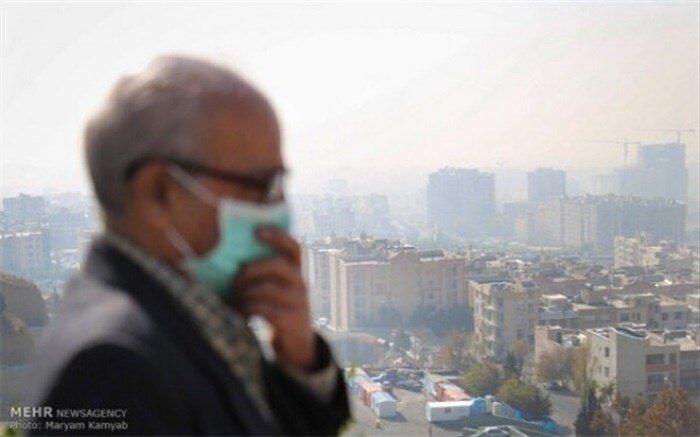Air pollution costs healthcare system over $4b

TEHRAN – Expenses related to deaths attributed to air pollution are estimated at $4.3 billion over the past Iranian calendar year (March 2020-March 2021), Abbas Shahsavani, head of the air and climate change department of the Ministry of Health, has said.
About 10 percent of deaths are caused by air pollution nationwide. Various diseases such as heart and respiratory diseases, cancers, including lung cancer, are all associated with air pollution, he lamented.
Air pollution has been exacerbated compared to previous years, and it is predicted that the air quality index even gets worse next year due to drought and its consequences, he said.
Referring to mobile sources of pollution, he said that cars are highly polluting and are not compatible with global standards. Fixed sources and factories, whether small or large, do not have proper air purification systems, which worsen air pollution every year.
About 10 percent of deaths are caused by air pollution nationwide. The fastest measures to solve the air pollution crisis are listed in the Clean Air Law and its regulations and must be implemented, he further suggested.
The Clean Air Law, enacted in July 2017, was supposed to be a solution to ease air pollution across the country, but now, a few years after the adoption, different agencies neglect their legal duties to implement the law.
Comprising 34 articles, the law on clean air was adopted by Majlis [the Iranian parliament] after 6 years of continuous revisions.
Various executive agencies in the country, including the Ministry of Interior, the Ministry of Petroleum, the Ministry of Energy, the police, the municipality, the National TV, etc., have been obliged to implement measures to control air pollution. Three years after the law was enacted, many agencies have not only refused to take action to eliminate air pollution but have also taken steps against the Clean Air Law.
Emitters
Air pollution is responsible for around 40,000 premature deaths in Iran annually, Mohammad- Sadeq Hassanvand, head of the air pollution research center at Tehran University of Medical Sciences, said.
There are two main types of air pollution sources, mobile sources including cars, buses, planes, trucks, and trains, and stationary sources such as oil refineries, industrial facilities, and factories.
Some 40 percent of the emission is produced by stationary sources, while 60 percent of the pollution is generated from mobile sources.
However, due to severe air pollution in recent days in some metropolises of the country, including Tehran, Isfahan, Arak, Tabriz, etc., many experts have emphasized the share of stationary sources in air pollution in these areas because there are signs of non-standard fuel consumption such as Sulfur gasoline or mazut (a heavy, low quality fuel oil, used in power plants and similar applications).
Even mazut consumption has been approved in some power plants across the country.
Meanwhile, sulfur gasoline or mazut are still used in Iran, according to Article 18 of the Clean Air Law, the Ministry of Petroleum is obliged to produce fuel, including gasoline, gas oil, fuel oil, and kerosene in accordance with approved national standards (Euro 4).
Also, the share of motorcycles in the production of gaseous pollutants is about 21 percent and in the production of suspended particles is 10 percent.
In addition, every 10 carbureted motorcycles emit as much particulate matter like an old diesel bus per kilometer, which is a major cause of air pollution.
In addition to clunker motorcycles, old cars are also important factors in air pollution during fall and winter.
The number of old cars in the country is so high that Issa Kalantari, former head of the Department of Environment (DOE), had previously stated that “we have become a country of clunker vehicles because now 87 percent of the country's minibuses, 81 percent of motorcycles, 73 percent of buses, and 61 percent of trucks should be scrapped.”
Air pollution kills an estimated seven million people worldwide every year. WHO data shows that 9 out of 10 people breathe air that exceeds WHO guideline limits containing high levels of pollutants, with low- and middle-income countries suffering from the highest exposures.
FB/MG

Leave a Comment